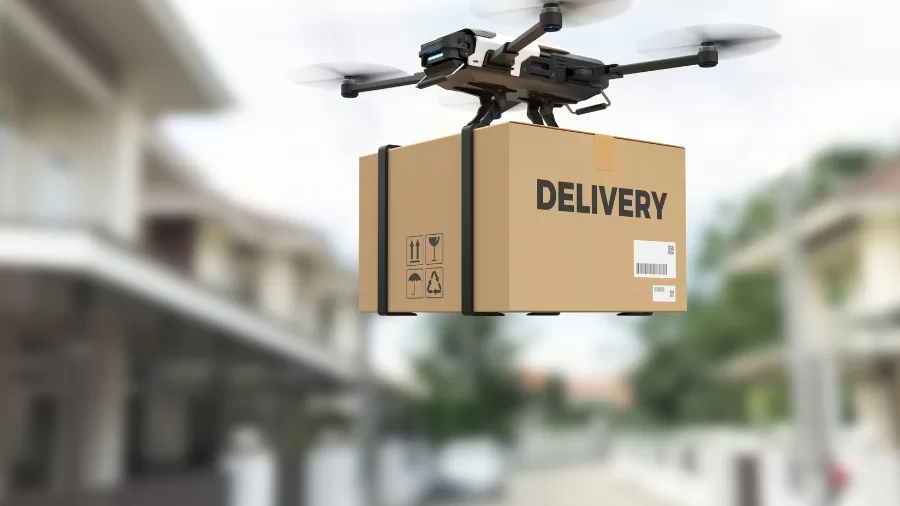Technology
Beyond the Hype: The Real Impact of Mobile Robots and Drones

- Mobile robots and drones are transforming industries, enhancing logistics, supply chains, and operations through AI and automation.
- Challenges such as navigation, battery life, and regulatory hurdles need to be addressed before these technologies can be fully adopted.
- The future of robotics will feature collaborative robots, drone swarms, and AI-driven innovations that push the boundaries of efficiency and creativity.
As technology evolves, the logistics and supply chain sectors are undergoing a significant transformation. Mobile robots and drones are no longer just futuristic concepts; they are fast becoming integral parts of the supply chain ecosystem. Powered by artificial intelligence (AI) and automation, these technologies are set to revolutionise industries, optimise operations, and enhance productivity in ways once thought impossible.
Evolution of Mobile Robotics: From Concept to Reality
Once confined to research labs, robots are now transforming industries like warehousing, healthcare, and manufacturing. Autonomous Mobile Robots (AMRs) are now navigating complex environments to move products, assist with deliveries, and perform vital tasks in these sectors.
Delivery robots are revolutionising last-mile logistics by transporting goods directly to customers, cutting delivery times, reducing human intervention, and reaching remote areas. Additionally, robots are taking on cleaning and sanitising duties in hospitality and healthcare, freeing up human workers for more specialised tasks.
Drones: Revolutionising Logistics Industry
Once primarily used for recreation, drones are now transforming industries. Their ability to fly autonomously and deliver precise results has made them invaluable in logistics. The promise of drone delivery is now becoming a reality, with major companies heavily investing in the technology. Drones can access hard-to-reach areas and dramatically reduce delivery times.
Beyond logistics, drones are reshaping inspections and monitoring. Equipped with advanced sensors and high-resolution cameras, drones are now used to inspect critical infrastructure, such as bridges, power lines, and pipelines. This innovation not only reduces maintenance costs but also enhances safety by limiting the need for human workers in hazardous environments. In agriculture, drones optimise crop monitoring, pesticide spraying, and yield management, all while minimising environmental impact.
Challenges and Roadblocks Ahead
Despite the immense potential of mobile robots and drones, several obstacles remain before widespread adoption is feasible.
- Navigation and Mapping: Developing reliable systems for robots and drones to autonomously navigate complex, ever-changing environments is a major challenge. The technology must adapt to dynamic conditions in real-time.
- Battery Life: For drones in particular, extended flight times are crucial. While battery efficiency is improving, current limitations still restrict operational capacity.
- Regulatory Hurdles: Inconsistent regulations across different regions slow down global deployment. A unified approach to governing autonomous technologies will be essential for scaling operations worldwide.
- Ethical Concerns: As autonomy increases, issues around job displacement, privacy, and security arise. Striking a balance between technological innovation and social responsibility will be key to ensuring the ethical use of these technologies.
What the Future Holds: Emerging Trends in Robotics and Drones
AI and Machine Learning: Enhancing Capabilities
The future of mobile robotics and drones holds great potential, with several exciting developments expected in the near future. The integration of AI and machine learning will elevate the capabilities of robots and drones, enabling them to make real-time decisions and adapt to dynamic environments. This will greatly enhance their efficiency and versatility across various industries.
Collaborative Robots and Cobots
Another key trend is the rise of collaborative robots, or “cobots,” designed to work alongside human employees. These robots aim to boost both safety and productivity in industrial environments.
Swarm Robotics and Drone Cooperation
Additionally, advancements in swarm robotics, which involve multiple robots coordinating their actions, will significantly impact logistics. In these settings, robots working in unison could manage complex tasks like inventory handling. Drone swarms are also poised to revolutionise industries such as agriculture, disaster response, and construction, where large-scale collaboration can dramatically improve efficiency and effectiveness.
A Future Transformed by Robots
Mobile robots and drones are no longer distant concepts; they have become a tangible and expanding presence across industries worldwide. While challenges such as navigation, battery life, and regulation remain, these technologies hold immense potential to transform supply chains, enhance safety, and streamline operations. As research and development continue to advance, we can expect a future where autonomous systems play an even greater role, driving efficiency, sustainability, and innovation across sectors.


















































